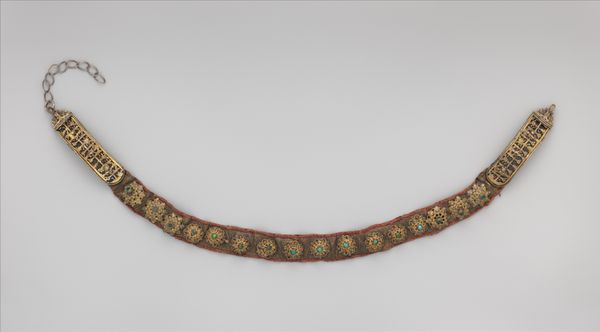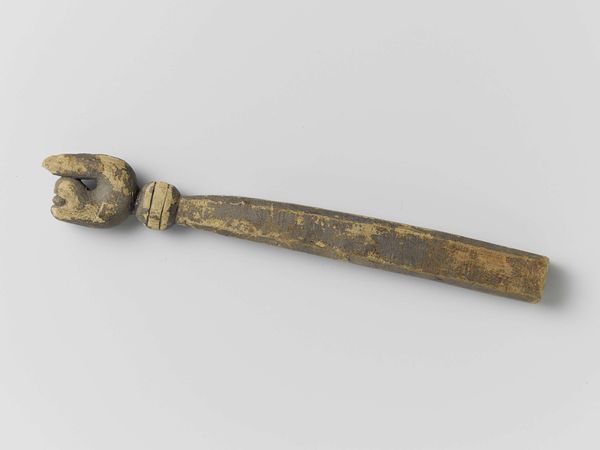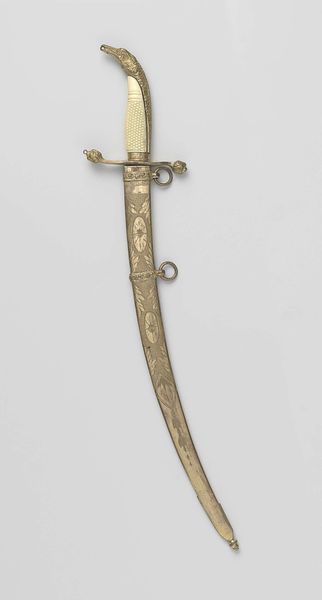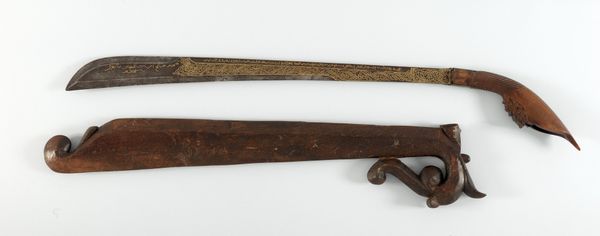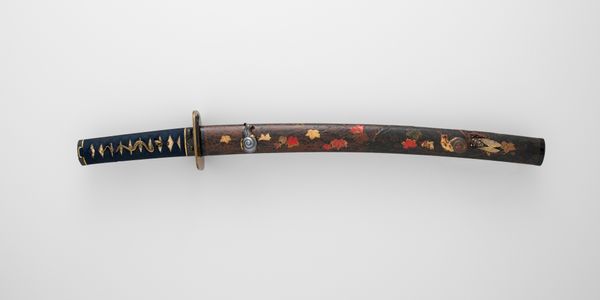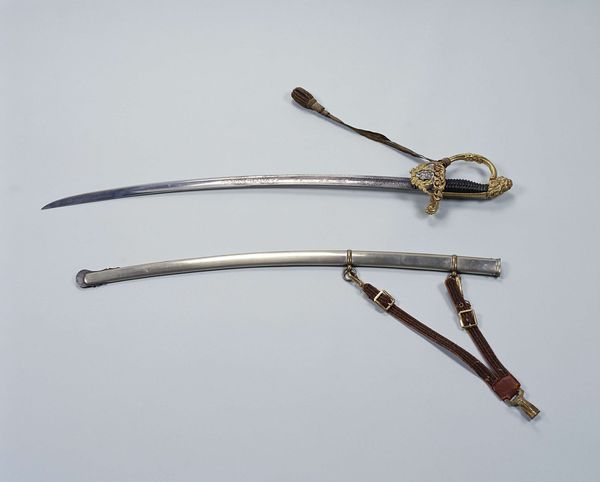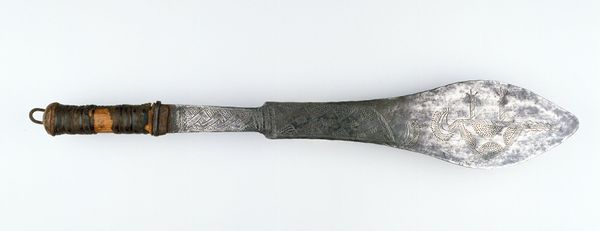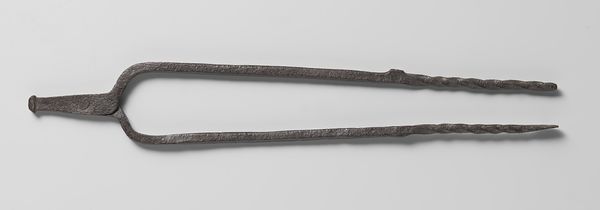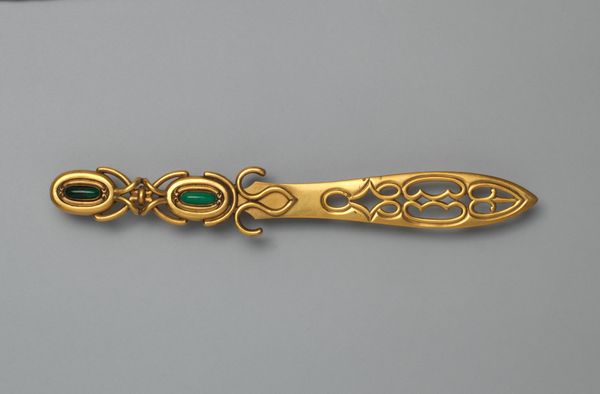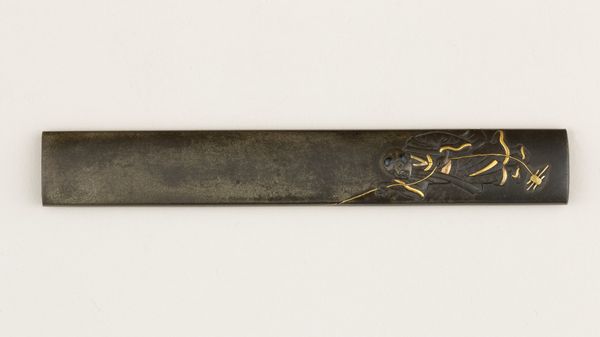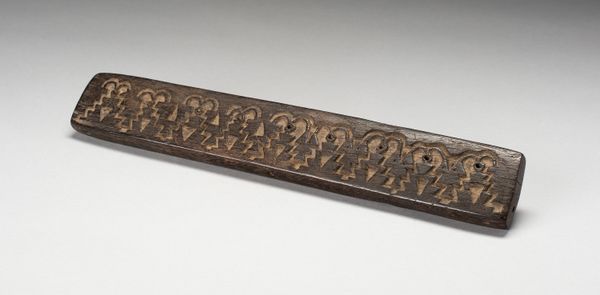
Saber (Kiliç) with Scabbard l, a, t, e, , 1, 9, t, h, , c, e, n, t, u, r, y, , B, l, a, d, e, , i, n, s, c, r, i, b, e, d, , 1, 0, 9, 9, , H, e, j, i, r, a, , [, A, ., D, ., , 1, 6, 8, 7, ]
0:00
0:00
carving, metal, ivory
#
weapon
#
carving
#
metal
#
islamic-art
#
armor
#
sword
#
ivory
Dimensions: Blade L. 71.1 cm (28 in.)
Copyright: Public Domain
This saber with scabbard, of unknown origin, features a blade forged from steel. The hilt is bone, while the mounts are gilded silver, set with gems. Consider the making: For the blade, a master smith would have repeatedly heated and hammered the metal, folding it back on itself to increase its strength. The hilt would have been carved and polished, the mounts chased and engraved. All are highly skilled processes. Now, think about function: a sword is obviously a weapon, but also a symbol. Sumptuously decorated, this saber transcends pure utility. The embedded jewels are not especially useful in battle, but certainly make a statement of power. The labor involved in the sword's creation signals status. It's a reminder that material culture is always tied to the social realities of production, consumption, and class. It challenges distinctions of fine art and craft.
Comments
No comments
Be the first to comment and join the conversation on the ultimate creative platform.
